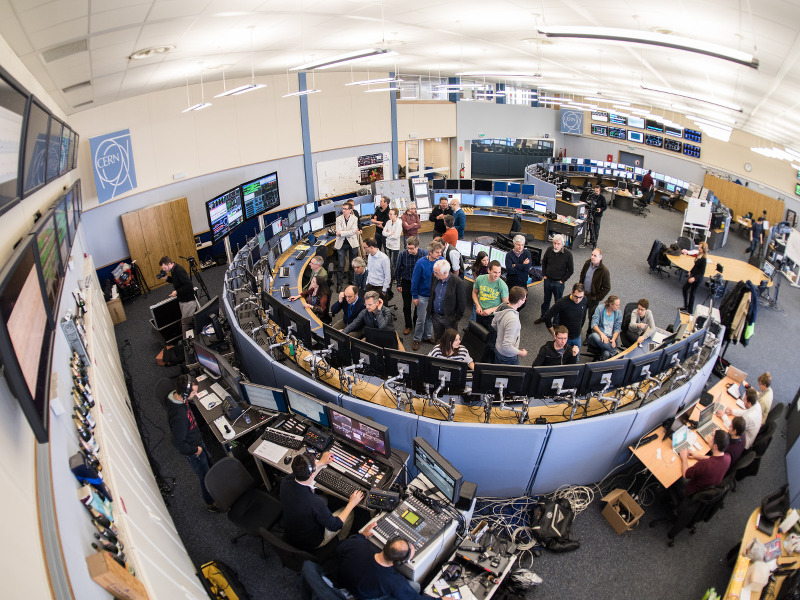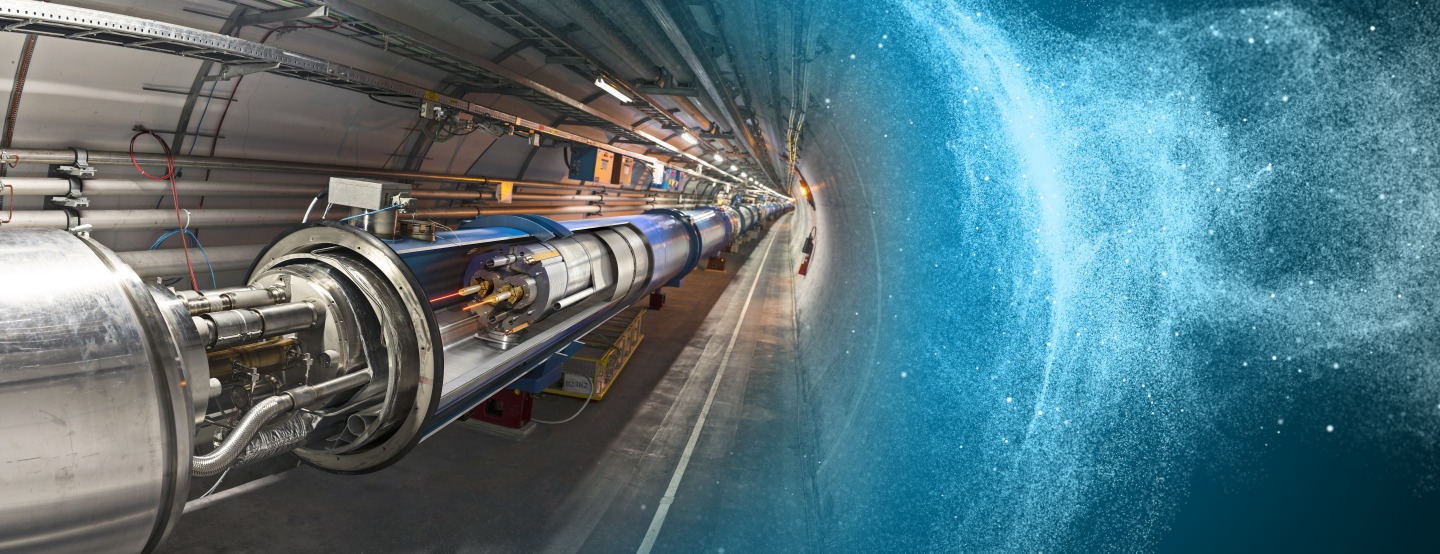LHC maintanence in 2013, via Anna Pantelia/CERN
Following a two-year hiatus, CERN’s Large Hadron Collider (LHC) has been turned back on and the planet hasn’t been destroyed, thankfully.
The world’s most powerful particle accelerator began smashing up particles again over the weekend, with two protons beaming through the 27km ring in opposite directions at their injection energy of 450 GeV, which will increase imminently as systems are checked and approved again.
“After two years of effort, the LHC is in great shape,” said Frédérick Bordry, director for accelerators and technology at CERN. “But the most important step is still to come when we increase the energy of the beams to new record levels.”
Stopping the LHC back in 2013 was a pretty major undertaking, with the consolidation of around 10,000 electrical interconnections between magnets just one of the many tasks involved.
Magnet protection systems were added, while cryogenic, vacuum and electronics were improved and strengthened.
Now to improve its future research, the beams are going to produce far more collisions by separating the bunches of protons by smaller margins, from 50 nanoseconds to 25 nanoseconds.

Scientists look on as the LHC is turned back on by CERN, via Maximilian Brice/CERN
“Operating accelerators for the benefit of the physics community is what CERN’s here for,” said Rolf Heuer, director general of CERN, when the LHC kicked back into action on Sunday. “Today, CERN’s heart beats once more to the rhythm of the LHC.”
This is the second phase of the LHC’s mammoth research operation. It will produce nearly double the energy of phase one, “at 6.5 TeV per beam”, according to CERN.
“With 13 TeV proton-proton collisions expected before summer, the LHC experiments will soon be exploring uncharted territory.
“The Brout-Englert-Higgs mechanism, dark matter, antimatter and quark-gluon plasma are all on the menu for LHC season two. After the discovery of the Higgs boson in 2012 by the ATLAS and CMS collaborations, physicists will be putting the Standard Model of particle physics to its most stringent test yet, searching for new physics beyond this well-established theory describing particles and their interactions.”

The new LHC has many improvements to produce more energy, via CERN